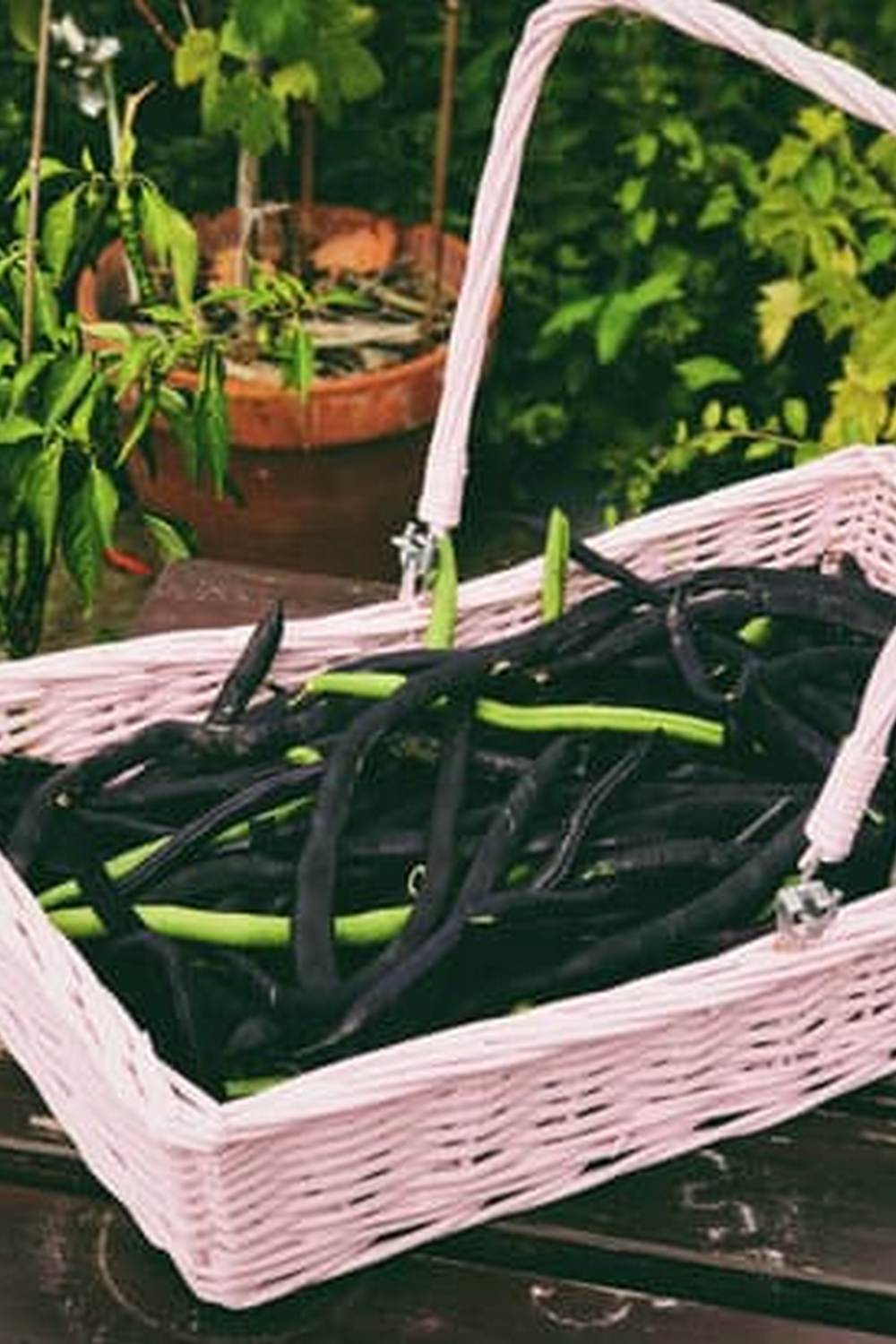Groundhogs, also known as woodchucks, are common backyard pests that can wreak havoc on vegetable gardens. Many gardeners often wonder, “Do groundhogs eat vegetable gardens?” These burrowing rodents have a voracious appetite for vegetation, including vegetables like lettuce, beans, and squash.
To effectively address the issue of groundhog invasion in your garden, it’s crucial to understand their behavior patterns. Groundhogs are diurnal creatures, meaning they are most active during the day. They typically feed in the early morning or late afternoon and spend the rest of their time digging burrows for shelter and hibernation.
In this article, we will delve into the physical characteristics and habits of groundhogs, explore their dietary preferences that make vegetable gardens a prime target, identify signs of their presence in your garden, discuss effective prevention methods and deterrents to keep them away from your crops, and provide guidance on when to seek professional help in managing groundhog infestations. Let’s equip ourselves with the knowledge needed to protect our precious vegetable gardens from these hungry critters.
What Are Groundhogs
Groundhogs, also known as woodchucks, are members of the squirrel family and are commonly found in North America. These furry creatures are known for their stout bodies, short legs, and bushy tails. They can grow up to 2 feet in length and weigh anywhere from 5 to 12 pounds. Groundhogs have a unique set of physical characteristics that make them well-suited for their burrowing lifestyle.
In terms of behavior, groundhogs are primarily herbivores, which means that they mainly feed on plants. This brings us to the question: do groundhogs eat vegetable gardens? The answer is yes. Groundhogs have a particular fondness for vegetables such as lettuce, peas, beans, and carrots. Their appetite for fresh produce often leads them to raid vegetable gardens in search of a tasty snack.
| Food | Prevalence in Diet |
|---|---|
| Vegetables | High |
| Fruits | Moderate |
| Grasses and Herbs | Low |
While groundhogs may be cute to observe from afar, their penchant for vegetable gardens can quickly turn them into pests for gardeners. It’s essential to understand their physical characteristics and habits to effectively protect your precious crops from these furry intruders.
Do Groundhogs Eat Vegetables?
Groundhogs, also known as woodchucks, are herbivores that primarily feed on plants, fruits, and vegetables. While they may consume a variety of vegetation, groundhogs have been known to have a particular fondness for vegetable gardens. They are especially attracted to crops like lettuce, beans, peas, squash, and other leafy greens. This preference for fresh produce often leads them to target home gardens, much to the frustration of gardeners.
Their voracious appetite and burrowing nature make groundhogs a nuisance for those who cultivate vegetable patches. These critters can quickly decimate a garden by munching on crops and trampling plants in the process. Their feeding habits can result in significant damage to yields and pose a challenge for gardeners seeking to protect their harvests.
Gardeners often notice the presence of groundhogs through various signs in their vegetable gardens. Damage such as half-eaten vegetables, missing leaves or fruit, and burrow holes near plants are typical indicators of groundhog activity. These destructive patterns can help identify if these furry pests are responsible for the disappearing produce in your garden. Understanding their behaviors and diet is crucial in implementing effective strategies to deter them from wreaking havoc on your beloved crops.
Signs of Groundhog Presence in Your Garden
Groundhogs may be adorable creatures, but their appetite for vegetables can wreak havoc on your garden. It’s important to understand the signs of groundhog presence in your garden so that you can take action before they devour all your hard work. Here are some key indicators that groundhogs may be the culprits behind your disappearing vegetables:
- Large burrows: Groundhogs dig extensive burrow systems with multiple entrances, which can disrupt soil and damage the root systems of nearby plants.
- Visible droppings: Groundhog droppings are cylindrical in shape and about 3/8 inch in diameter. Finding these around your garden is a clear sign of their presence.
- Nibbled vegetation: Groundhogs have a preference for certain vegetables like beans, peas, lettuce, and squash. If you notice extensive damage to these crops, it’s likely the work of groundhogs.
If you suspect groundhogs are feasting on your vegetable garden, it’s important to act quickly to prevent further damage. One effective method is installing fencing around your garden plot to physically block their access. Make sure the fence extends at least a foot below the ground to prevent burrowing.
Other prevention methods include removing any sources of food or shelter near your garden that may attract groundhogs. Keep grass trimmed and remove debris where they could potentially hide. Additionally, consider planting deterrent crops like garlic or other strong-smelling herbs that repel groundhogs. Remember, early detection is key to protecting your vegetable garden from these hungry critters.
Prevention Methods
Groundhogs are known for their voracious appetite and can quickly decimate a vegetable garden if left unchecked. In this section, we will discuss some effective prevention methods to protect your precious crops from groundhog intrusion.
Fencing
One of the most common and effective ways to keep groundhogs out of your vegetable garden is by installing a sturdy fence. Make sure the fence extends at least one to two feet below the ground to prevent burrowing. Opt for fencing that is at least 3-4 feet high, as groundhogs are excellent climbers. Adding an electric wire at the top of the fence can provide an extra deterrent for these persistent critters.
Repellents
There are several natural repellents available that can help deter groundhogs from feasting on your vegetables. Plants like daffodils, marigolds, and garlic emit odors that groundhogs find unpleasant. You can also try spraying a mixture of garlic and cayenne pepper on your plants to keep them safe from these hungry pests. Commercial repellents containing predator urine or other natural ingredients can also be effective in keeping groundhogs at bay.
Harvesting Timely
Groundhogs are more likely to target vegetable gardens with mature, ripe produce. To reduce the risk of attracting them to your garden, make sure to harvest your crops promptly. By picking fruits and vegetables as soon as they are ready, you can minimize the temptation for groundhogs to invade your garden in search of a meal.
By implementing these prevention methods, you can effectively protect your vegetable garden from groundhog intrusion and ensure a bountiful harvest for yourself. Remember that persistence is key when dealing with these crafty critters, so don’t be discouraged if it takes some trial and error to find the method that works best for keeping groundhogs away from your crops.
Repellents and Deterrents
Groundhogs can be quite a nuisance when it comes to vegetable gardens, as they have a voracious appetite for many plants commonly found in these gardens. If you’re wondering “do groundhogs eat vegetable gardens,” the answer is yes, they certainly do. These critters can wreak havoc on your crops if left unchecked. However, there are natural and humane ways to keep groundhogs away from your precious crops without causing harm to them.
Here are some effective repellents and deterrents that you can use to protect your vegetable garden from groundhog intrusion:
- Fencing: Install a sturdy fence around your garden that extends at least 3 feet underground and stands about 3-4 feet above ground to prevent groundhogs from digging under or climbing over.
- Natural predators: Encourage predator species like foxes, owls, or domesticated pets such as cats to roam around your property, as they will help deter groundhogs from coming near.
- Strong scents: Groundhogs have a keen sense of smell, so planting strong-smelling herbs like mint or garlic around the perimeter of your garden can help repel them.
Additionally, there are homemade remedies that you can use as repellents to keep groundhogs at bay:
- Spicy spray: Mix water with cayenne pepper or hot sauce and spray it on plants in your garden. The spicy scent will deter groundhogs due to their sensitive noses.
- Ammonia-soaked rags: Place rags soaked in ammonia around the garden area, as the strong scent will discourage groundhogs from entering.
- Noise deterrents: You can also place windchimes or use ultrasonic devices that emit high-frequency sounds to keep groundhogs away by disrupting their calm environment.
By implementing these natural and humane repellents and deterrents, you can effectively protect your vegetable garden from being ravaged by hungry groundhogs while ensuring the safety and well-being of these creatures. Remember, prevention is key when it comes to maintaining a flourishing garden free from unwanted visitors like groundhogs.
Working With Wildlife Professionals
Groundhog infestations can be a challenging problem to deal with, especially when prevention methods and repellents do not seem to be effective. In such cases, seeking help from wildlife professionals may be the best course of action to effectively handle the situation. These experts have the knowledge and experience to address groundhog infestations in a safe and humane manner, ensuring that both the animals and your vegetable garden are protected.
Identifying the Need for Professional Assistance
If you have noticed persistent signs of groundhog presence in your garden despite your efforts to deter them, it may be time to consider seeking help from wildlife professionals. Signs such as extensive damage to your vegetable plants, large burrow holes near your garden, or frequent sightings of groundhogs during daylight hours indicate a significant infestation that requires expert intervention.
Ignoring the problem could lead to further destruction of your crops and an increase in the groundhog population on your property.
The Benefits of Working With Wildlife Professionals
Wildlife professionals possess specialized knowledge on groundhog behavior and habits, allowing them to implement effective strategies for removing these pests from your property. They can conduct thorough assessments of the situation, identify entry points used by groundhogs, and implement targeted removal methods that are both safe for the animals and environmentally friendly. By enlisting their help, you can ensure that the infestation is handled efficiently and prevent future occurrences through proper exclusion techniques recommended by these experts.
Conclusion
In conclusion, it is important to be aware of the behavior and habits of groundhogs in order to protect your vegetable garden from these furry intruders. Groundhogs are herbivores that have a particular fondness for vegetables, making them a common threat to gardeners. They have the potential to cause significant damage to your crops if left unchecked, so it is crucial to take proactive measures to keep them at bay.
To prevent groundhogs from feasting on your vegetable garden, there are several effective methods you can employ. Installing fences buried underground and extending above ground, using deterrents like predator urine or motion-activated sprinklers, and keeping your garden clean and free of debris can help deter groundhogs from making a meal out of your precious plants.
Additionally, properly storing food sources like bird feed and compost away from your garden area can help reduce the attractiveness of your property to these hungry critters.
If despite your best efforts you find yourself facing a persistent groundhog problem in your garden, it may be time to seek assistance from wildlife professionals. These experts have the knowledge and tools necessary to safely and humanely remove groundhogs from your property without causing harm to the animals. By following these prevention methods and knowing when to call for professional help, you can ensure that your vegetable garden remains a lush and bountiful paradise free from unwanted guests.
Frequently Asked Questions
How Do I Keep Groundhogs Out of My Vegetable Garden?
Keeping groundhogs out of your vegetable garden can be challenging but there are a few strategies you can try. One method is to install a fence buried at least 12 inches deep and extending several feet above ground to prevent them from burrowing under or climbing over.
Another approach is to eliminate potential food sources around the garden area, such as fallen fruits or vegetables.
Will Groundhogs Eat My Vegetables?
Groundhogs are known to have a diet that consists mainly of plants, including vegetables, so it is possible for them to eat your veggies if given the opportunity. They particularly enjoy munching on greens like lettuce, beans, and peas. This makes them a common nuisance for many gardeners who have struggled with protecting their crops from these burrowing creatures.
Will Groundhogs Eat Tomato Plants?
Tomato plants are not typically at the top of a groundhog’s menu preference compared to other leafy greens or crunchy vegetables. However, in times of scarcity or when other food sources are limited, groundhogs may indeed turn to tomato plants as an alternative option for sustenance.
It’s important to take preventive measures if you suspect groundhogs might be targeting your tomato plants by using fencing or repellents to protect your crop.

If you’re looking to get into vegetable gardening, or are just looking for some tips on how to make your current garden better, then you’ve come to the right place! My name is Ethel and I have been gardening for years. In this blog, I’m going to share with you some of my best tips on how to create a successful vegetable garden.





